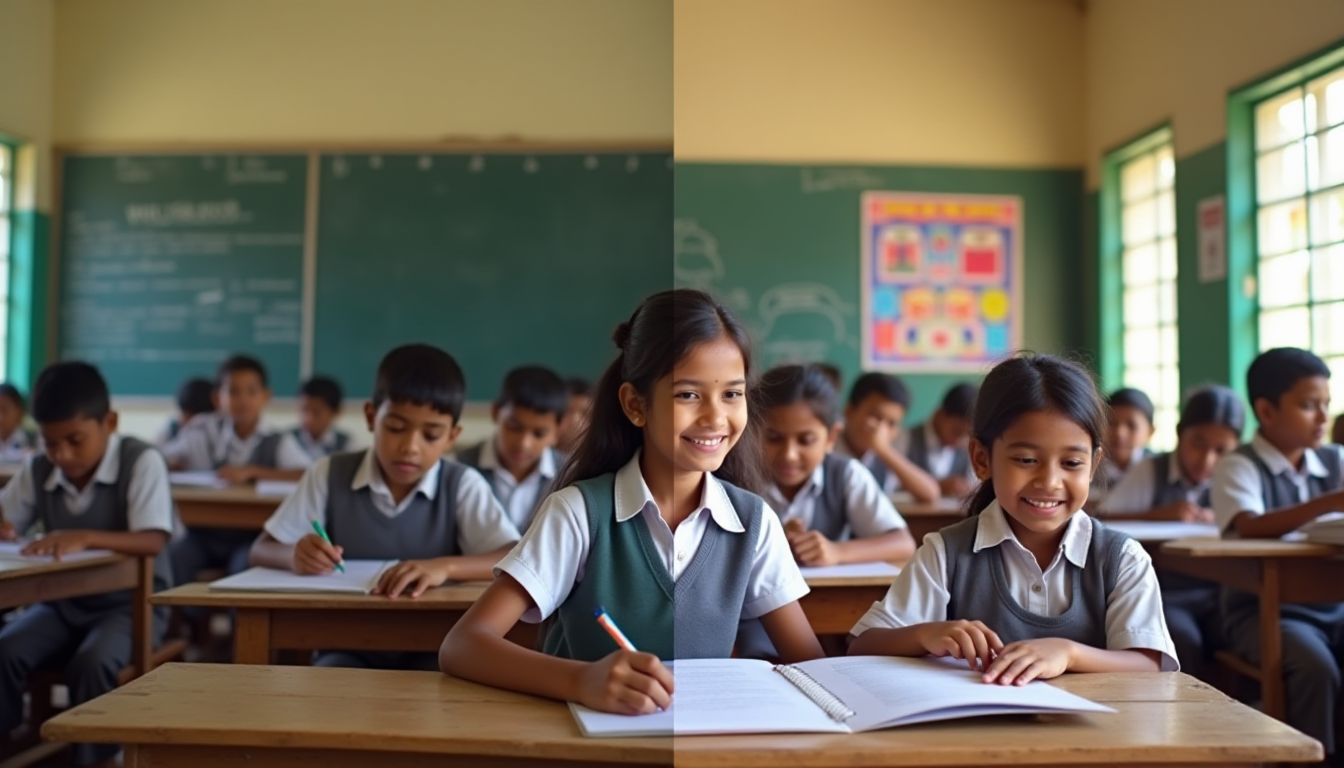How NEP 2020’s Language Policy Unites Bharat’s Cultures

It’s a bustling morning at a Delhi airport, and a tourist from abroad chats with a local teacher. “I tried learning Hindi in Varanasi,” the tourist says, “but in Bengaluru, it was all Kannada! How do you keep up with so many languages?” The teacher grins. “In Bharat, every language is a key to a new world. Pick one, and you’ll unlock poetry, wisdom, and stories that tie us together.” This is the heart of the New Education Policy (NEP) 2020’s three-language policy—a bold move to celebrate Bharat’s linguistic diversity while weaving a stronger, unified nation.
At Tailwnd, we see this policy as a bridge to Bharat’s cultural riches, helping students grow resilient, curious, and connected to the land of sages. Here’s why it’s a game-changer and how schools can bring it to life.
Languages: The Heartbeat of Culture
Bharat’s languages—from Tamil to Assamese, Marathi to Manipuri—are more than words; they’re vessels of history, philosophy, and shared values. The NEP 2020 encourages students to learn their mother tongue, English, and a third language of their choice, with at least two being native to Bharat. Unlike past policies that stirred debates over “Hindi imposition,” this flexible approach lets regions choose what fits—Malayalam in Kerala’s border towns, Odia in coastal Odisha, or even Sanskrit for its ancient depth.
This matters because languages carry Bharat’s soul. Learning Telugu might open the door to Annamacharya’s devotional songs, while Punjabi could reveal Guru Nanak’s teachings. A 2020 study in Educational Research found that multilingual students are 25% better at seeing multiple perspectives, as languages sharpen cognitive flexibility. By embracing regional tongues, kids connect to the universal warmth of “amma” or “bhai,” knitting Bharat’s diverse threads into one vibrant tapestry.
Mending Linguistic Divides
Bharat’s strength is its diversity, but linguistic pride can sometimes fracture unity. In some regions, Hindi sparks fears of cultural erosion, while English, a colonial legacy, is chased as a status symbol. The NEP 2020 sidesteps this by giving schools and students freedom to pick their third language, honoring local identities. Picture a Tamil Nadu classroom where kids in Madurai learn Telugu, while those in Tirunelveli explore Malayalam. This regional approach fosters respect, not rivalry, and creates jobs by bringing teachers across state lines—Karnataka sharing Kannada educators, Bihar sending Hindi ones.
This isn’t just logistics; it’s integration. When students greet a friend with “chana” in Karnataka or “namaste” in Rajasthan, they’re building bonds that transcend politics. They’re learning that Bharat’s heart beats in every tongue, from the Gita’s Sanskrit to Kabir’s Hindi dohas.
Tapping the Wisdom of Sages
Bharat is a land of thinkers—Thiruvalluvar, Basavanna, Rabindranath Tagore—whose words carry lessons in resilience, empathy, and critical thinking. The NEP’s focus on regional languages lets students dive into these works in their original glory. Reading Akka Mahadevi’s Kannada vachanas or Andal’s Tamil verses isn’t just academic—it’s a masterclass in facing life’s highs and lows with grace. A 2021 Journal of Educational Psychology study showed that students engaging with diverse cultural texts were 20% more likely to push through setbacks. Wrestling with a new language, like stumbling over Bengali grammar or Hindi idioms, builds the grit to tackle any challenge.
This spirit of inquiry mirrors Bharat’s sage-like curiosity. When kids learn a language, they’re not just memorizing—they’re embracing failure as a path to growth, a skill that outlasts any exam.
How Schools and Parents Can Make It Work
Schools can turn the three-language policy into a cultural celebration:
- Spark joy in learning. Use games, like translating a Tulsidas couplet or acting out a Bodo folktale, to make languages fun.
- Bring in diverse teachers. Hire educators from neighboring states—Telugu speakers from Andhra, Manipuri from Manipur—to enrich classrooms and economies.
- Connect to heritage. Teach languages through stories of sages, like Kambar’s epics or Guru Gobind Singh’s verses, to ignite curiosity.
Parents, you’re vital too. At dinner, ask, “What’s a new Gujarati word you learned?” or “What does this Odia poem mean?” Watch a regional film together—a Malayalam drama or a Marathi classic—to make languages a family journey. These moments show kids that every language is a treasure, not a task.
A Bharat Bound by Curiosity
The NEP 2020’s three-language policy isn’t about rules—it’s about roots. It invites students to say “vanakkam” in Tamil Nadu, “sat sri akal” in Punjab, or “kem cho” in Gujarat, each phrase a thread in Bharat’s cultural fabric. By learning languages, kids unlock the wisdom of sages, grow resilient through trial and error, and become global citizens grounded in Bharat’s ethos.
At Tailwnd, we’re helping schools make this vision real. Our cognitive science-based programs weave language learning with emotional intelligence, turning classrooms into hubs of cultural pride. Let’s raise a generation that sees every language as a gift—a Bharat where every “amma” binds us as one.
Your Turn: How do you spark love for languages at home or school? Share your ideas below or tweet us @TailwndAI. Want Tailwnd’s cultural programs in your classroom? Email info@tailwnd.com. Let’s unite Bharat through curiosity!





